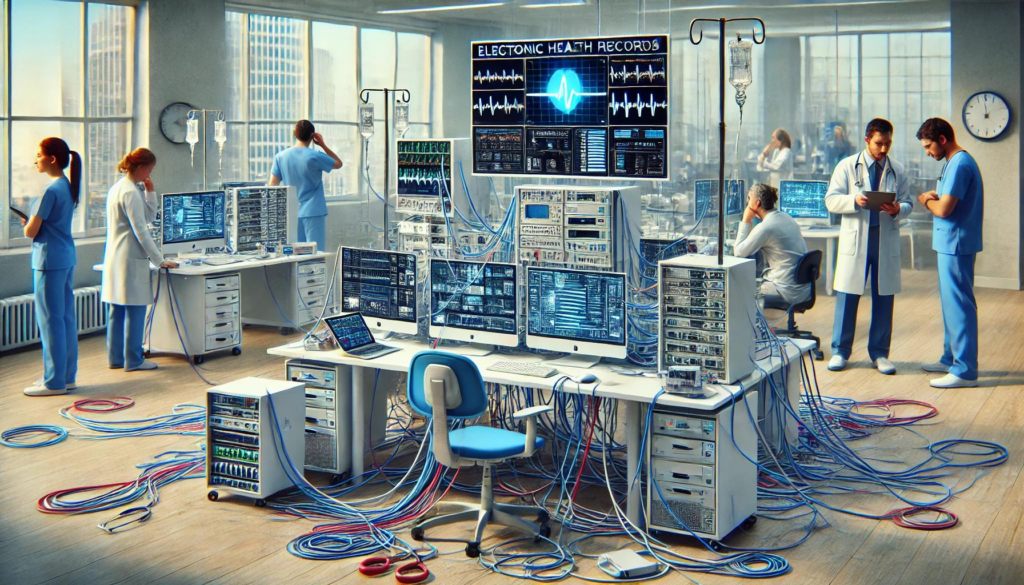This is the second in a blog series on serverless computing. Access the first post: Serverless Computing: An Overview.
If you’re like me, it’s easier to visualize and understand the benefits of something if you can see it in practice. So, as part of my blog series on serverless computing, this second installment will explore some recent healthcare use cases I’ve seen for serverless computing that make a lot of sense.
Life Sciences Manufacturing
The manufacturing process in pharma is time consuming and expensive. Policy and Medicine cites a study by the Tufts Center for the Study of Drug Development showing us that developing a new prescription medicine (that gains marketing approval) is estimated to cost drug developers $2.6 billion. The business is held to excruciating standards and documentation as part of GxP, and has a need to collect and somehow store massive data, though they aren’t always using the data due to legacy systems and silos. In fact, a 2016 report by Gartner reported that 70 percent of manufacturing data from life-sciences companies goes unused. Being able to increase interoperability and pull this data from legacy silos could reduce the cost and time life sciences spend and improve the life-saving results they drive for.
This is where serverless comes in.
One company I have worked with alongside the AWS cloud brings their big data platform to bear on addressing the challenges life sciences face. They are storing and analyzing massive pharma/manufacturing data sets using emerging technologies including AI, machine learning, and neural networks. They are capturing data in a data lake with Amazon S3, then running serverless queries to analyze the data. The result is they have demonstrated clearly reduced costs and improved compliance for their organization as well as the life sciences manufacturing companies they serve by working with the data these companies already have at their fingertips. This specific organization was focusing on getting their data to be more accessible throughout the life sciences organization, whereas it’s commonplace to see life science organizations have their data siloed across business units, clinical/drug studies, or projects. By leveraging public cloud services, when combined with serverless, they will be able to share data across the ecosystem securely without adding cost, because they are only being charged for the time of access (runtime).
Genome and Disease Research
Another life science company is using serverless to offer scientists a complete R&D platform with faster searches so scientists can spend more time on research. CRISPR is a technique that researchers worldwide use to build disease models and screen for drug targets. This company supported hundreds of thousands of these searches across large numbers of genomes every month and was originally using several servers to process the searches. They wanted to scale their solution to hundreds of genomes and millions of searches each month, however, couldn’t afford to spin up new instances every time a new search was initiated. They were also concerned about the mounting dollars in maintenance they were spending in off hours when few if any people were using the platform. They built a new app using a serverless architecture that runs code without having to provision and manage servers. They chose to split up the CRISPR search across several serverless tasks to boost the scalability and reduce costs. By using serverless they have reduced search times by 90 percent and scaled to hundreds of genomes without having to ever provision additional servers. They report saving thousands of dollars every month in maintenance and they’ve freed up engineers to focus on new apps and development rather than infrastructure management.
Remote Health Services
We’ve seen a boon in mHealth and virtual care since the onset of COVID-19, and I don’t anticipate that will diminish when we finally get in front of this pandemic. One company in this sector I recently learned about offers remote the health services of teleconsultation with health professionals and delivery of pharmaceuticals. As the company grew, it wanted to launch a third service – in home lab services by qualified professionals. They were cobbling multiple technology services and meeting demand when spikes occurred that frequently took a 3X increase in server traffic, causing their dev team considerable challenges. They opted to move to the cloud and began building on serverless, while also employing other HIPAA-eligible cloud services for storage and database instances. Prior to the public cloud, they spent 20-30 percent of their time ensuring server responsiveness. Now with serverless, they have that time back, and say they are able to bring new app features to market about 30 percent faster than before. Serverless has made it simple to scale the business, and with the introduction of the new lab service, allowed them to build for an unknown amount of demand that they would only discover once they deployed their app. With serverless, they can easily spin up or shut down instances based on traffic patterns, and do so with no system administration (people) overhead.
RWE and Data Lakes
We’ve all heard the phrase Real World Evidence in healthcare. This means evidence obtained from data gathered outside of randomized control trials – instead this is from data generated during regular clinical practice or ‘real world’ practice. In healthcare today, there is no shortage of this data, but it can be hard to glean meaningful insights from it. Think about the petabyte size data sets being generated by wearables, then factor in mobile apps, genomics, imaging and claims data to just name a few sources and you can see that the sky bound mountain of data is growing exponentially. It is also made up of data from various sources and in various formats. For example, you have the streaming data coming in from IoT including FitBits, Apple watches, and medical devices such glucose or heart monitors. Then, you have the structured data being generated from claims data and the unstructured data found in EMRs.
On the public cloud, all of this data can be brought into a Real World Evidence platform with a data lake at the core. The platform stores metadata to identify where each piece of data came from and subsequent information about it. The architecture for your data lake can be built completely on serverless. If you are using AWS, for example, you can store it on S3 and invoke Lambda for your serverless to run your queries. Lambda can also write to a data catalog with metadata about the objects in your data lake. This kind of architecture lets you scale to any size, and when you’re working with the kind of data healthcare stores, you’ll need capacity. IAM (Identity Access Management) and other security protocols can be put in place to keep your data safe.
Those are just four samples out of hundreds of use case emerging to take advantage of the benefits of serverless to contain costs, scale up or down quickly, and let your DevOps or DevSecOps team focus on development, not maintenance.


